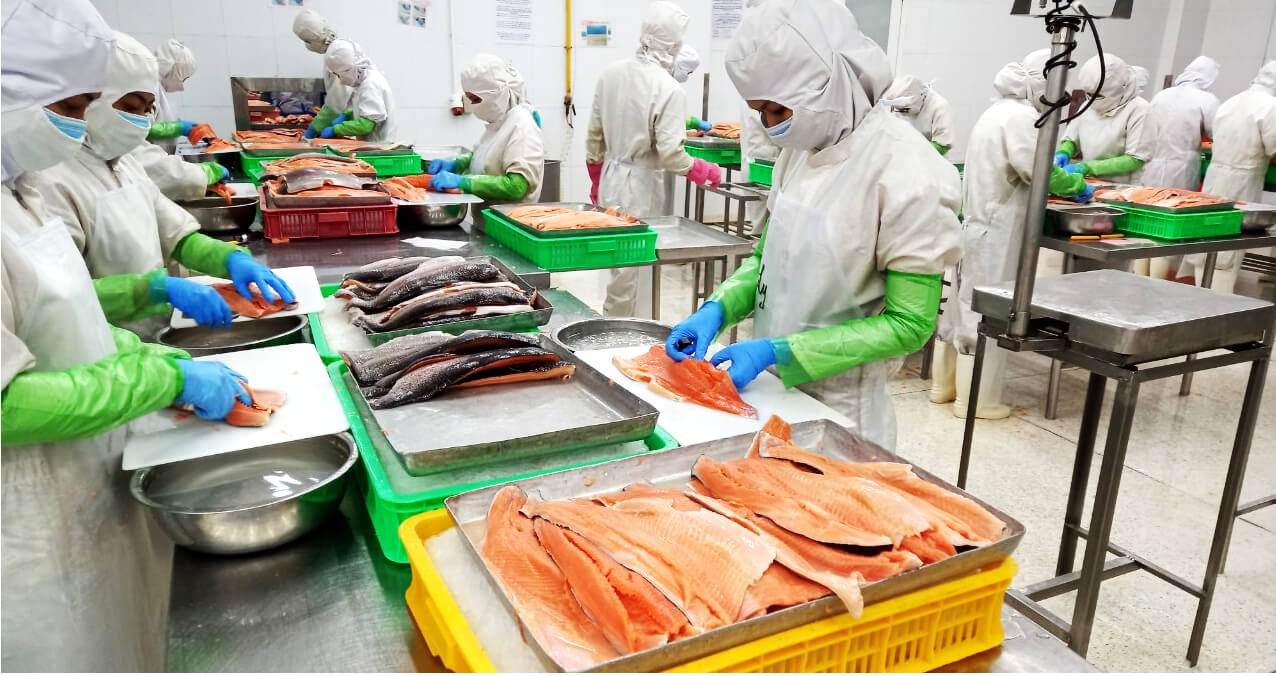(seafood.vasep.com.vn) The general context of January, with the New Year holidays and the Lunar New Year, inevitably caused the export of Vietnamese goods to decrease over the same period. Particularly, seafood exports decreased by nearly half to only USD 456 million. Besides, inflation and economic recession caused orders from major markets to drop sharply.
Exports of all main product lines decreased deeply by 30-60% over the same period. In which, pangasius exports fell the most by 61%, shrimp fell by 55%, tuna fell by 43%, squid and octopus by 32%.
Exports to key markets all dropped sharply by 30-66%. In which, exports to the US decreased the most by 66%, China decreased by 54%, the EU decreased by 48%, Japan decreased by 32%, South Korea decreased by 29%.
Economic and political fluctuations, commodity and food inflation continue to affect consumer demand as well as business plans in markets, especially large markets of Vietnamese seafood such as the US, EU, Japan, China.

In 2023, global inflation is forecast to decrease, but it is still the biggest risk for importers and a burden for consumers, especially low-income households.
The return of the Chinese market will bring a great opportunity for Vietnamese exporters. But China's consumption and imports of goods can also cause drastic fluctuations in the world energy, financial and currency markets. It is possible that many banks in large countries will increase interest rates, affecting importers.
However, Vietnamese seafood exporters are always dynamic and flexible, they always know how to overcome difficult conditions from the market, as well as the supply of raw materials. In the modest export picture of the first month of 2023, there have been notable changes.
While exports to large markets fell sharply because of small orders, exports to small markets, niche markets recorded breakthroughs in sales. For example, exports to Israel increased by 17%, to Indonesia increased by 8%, to Cameroon by 15%, to Laos by 21%, to Chile by 7%.
Even within the EU, most of the member countries have reduced imports of Vietnamese seafood by 30-60%, but there is still an impressive market with an increase of 435% like Finland. Exports to Poland also decreased slightly by 1%, Cyprus decreased by 5%.
Export products have also been diversified and there are still many species that have been strongly imported by markets in the past month. While shrimp exports in general decreased, baby shrimp exports increased by 18%, scad exports increased by 81%, cobia increased by 44%, hoki fish increased by 147%, croaker fish increased by 493%, drifted fish increased by 167%, oysters increased by 11%, snails increased by 107%.

While exports to large markets fell sharply because of small orders, exports to small markets, niche markets recorded breakthroughs in sales
Inflation is a challenge but also an opportunity for many affordable seafood species for low-income consumers. It is important that businesses grasp the changes of markets to adapt and have appropriate strategies.
From the last quarter of 2022, many businesses faced difficulties because of reduced orders, or no orders. However, 700 units still participated in seafood exports in January. The leading shrimp and pangasius enterprises all experienced a decrease of 40-70% in export sales compared to the same period last year. Some enterprises still had positive growth in January such as Trung Son Long An Food Export JSC up 4%, TRUNG SON HUNG YEN FOODSTUFF CORPORATION down slightly by 3%, Viet Cuong Company up 51%, Mariso Vietnam up 21%.
In the first quarter of 2023, seafood exports may still be about 15-20% lower than the same period last year. After the international seafood fairs in March and April, along with the adaptation and boom of the Chinese market as well as the strategic adjustment of Vietnamese seafood enterprises, it is hoped that exports will gradually recover in the second quarter.
Compiled by Thuy Linh